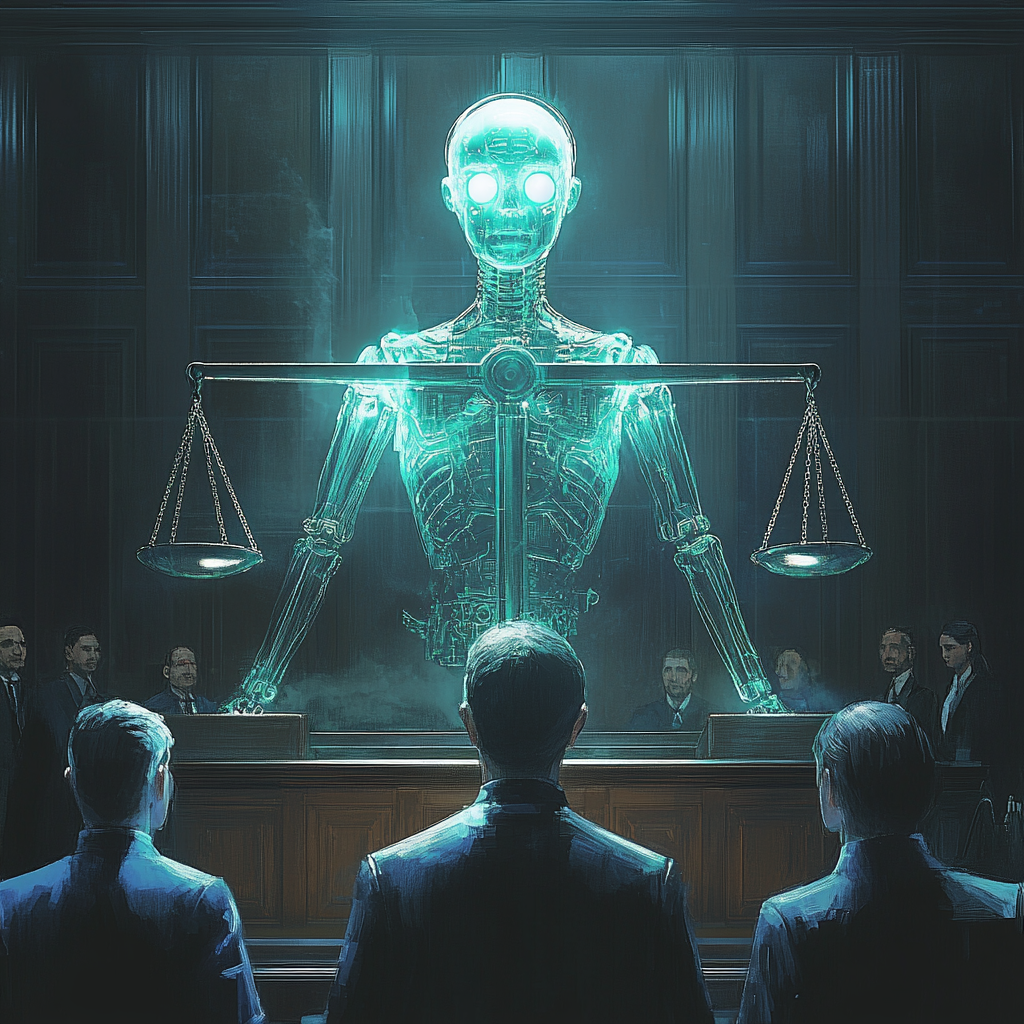
Ethical Challenges in Legal AI: Navigating Bias, Accountability, and Compliance
The Ethical Labyrinth of Legal AI: Navigating Bias, Accountability, and Compliance
In the sprawling, often baffling landscape of modern law, we find ourselves grappling with an audacious newcomer: artificial intelligence. With promises of efficiency and objectivity, AI has entered the legal arena, raising an intricate tapestry of ethical questions that would boggle even the sharpest legal minds. While we find comfort in the glow of algorithms sifting through endless case files faster than any human ever could, we must also face the darker dimensions of this technological vanguard. Shall we plunge into this maze of bias, accountability, and compliance? Grab your magnifying glass and let’s unearth the facts, passionately served.
Bias: The Incessant Shadow
The digital age, as exciting as it is, has a peculiar habit of resurrecting the old ghosts of bias—those ever-present specters lurking in the corners of any algorithm. Like sneaky gremlins, biases can slug their way into the data that's fed into our AI systems, raising a cacophony of ethical alarms. It's almost poetic how our hopes for a fairer, wiser judicial system could crumble under the weight of skewed data sets if we're not careful (see result [1]).
Now, here’s the kicker: if we don’t scrutinize the data, the AI could inadvertently perpetuate existing biases. Think about it—if you train an AI with historical data reflecting societal prejudices, it’s no surprise when it mirrors that unruly behavior. The potential for bias extends beyond clients; it’s all consuming. From hiring practices to courtroom decisions, one misjudgment could lead to unjust consequences for an entire community. A justice system inherently based on misrepresentation is hardly a justice system at all, wouldn't you agree?
The American Bar Association (ABA) provides a somewhat comforting narrative through the likes of the Model Rules 1.1, 1.3, and 1.5. These guidelines (yes, yet another official list) encourage attorneys to leverage AI in ways that enhance accessibility, mitigate unreasonable fees, and curb delays. But only if you’re aware of the biases lurking beneath the smooth digital surface. The challenge here isn’t just about integrating AI; it's about ensuring that what feeds into it is as free from bias as possible.
Accountability: Who's in Charge Here?
As we meander through this labyrinth, let’s light a torch on accountability. When the proverbial muck hits the fan, who gets to step forward? Is it the lawyer who relied on the AI’s judgment? Or the tech company that built the AI? The dance of responsibility is as twisted as a labyrinthine passage.
AI does not speak with moral intent—it operates as a reflection of its training. When it churns out a ruling that goes awry, casting blame becomes a finger-pointing farce. Result [3] hits it right on the head when it emphasizes that continuous education and systematic audits are crucial tools in combating bias. Yep, just when you thought you could kick back and let technology do all the work, we remind you that maintaining oversight transforms into a vital responsibility for lawyers. Sounds exhausting, right?
Legal professionals must not only understand how the AI works but also hold it accountable for its decisions. Or, who knows? You might find yourself in a courtroom someday, defending a client against an AI’s flawed logic while frantically searching for that regulation from a tomb of legal documents.
Compliance: Staying on the Right Side of the Law
Now, we arrive at compliance, the often overlooked guardian of ethics in the AI landscape. As result [4] astutely points out, the intersection between regulatory frameworks and AI usage is as complex as navigating the New York subway during rush hour. Various jurisdictions have different rules about data protection and technology use, all while grappling with the glaring speed of AI advancement.
Lawyers must be proactive and ensure compliance with existing regulations while preparing for the future. This means balancing relentless innovation with rigid legal landscapes—a task that's easier said than done. Hence, emerging technologies will require ongoing dialogues among legal minds, tech developers, and regulatory bodies. Failing to keep up could have tectonic repercussions for firms caught off guard when regulations shift.
And don't even get me started on judicial ethics! As revealed in result [5], the risk of ex parte communication and breaches of confidentiality in the courtroom when AI steps in is both thrilling and terrifying. Imagine a judge relying too heavily on an AI analysis, undermining the very core of impartiality rules! Welcome to an ethical minefield where guardians of justice must navigate carefully.
Conclusion: Navigating the Minefield with Caution
The realm of legal AI is not just an intriguing conundrum; it’s an ethical minefield swarming with potential pitfalls. Bias, accountability, and compliance come together in a complicated dance that legal professionals must learn to navigate with grace, or risk finding themselves on the wrong side of justice. So, as we ponder the integration of AI in our courts, we must remember these ethical challenges. The technology should serve humanity, preserve justice, and enhance our legal systems, not erode them.
Now that you’re equipped with this knowledge, why not take an extra step? Stay ahead of the whirlwind surrounding neural networks and automation. Want to stay up to date with the latest news on neural networks and automation? Subscribe to our Telegram channel: @ethicadvizor. Together, let's ensure that the future remains as bright as it is complex!

